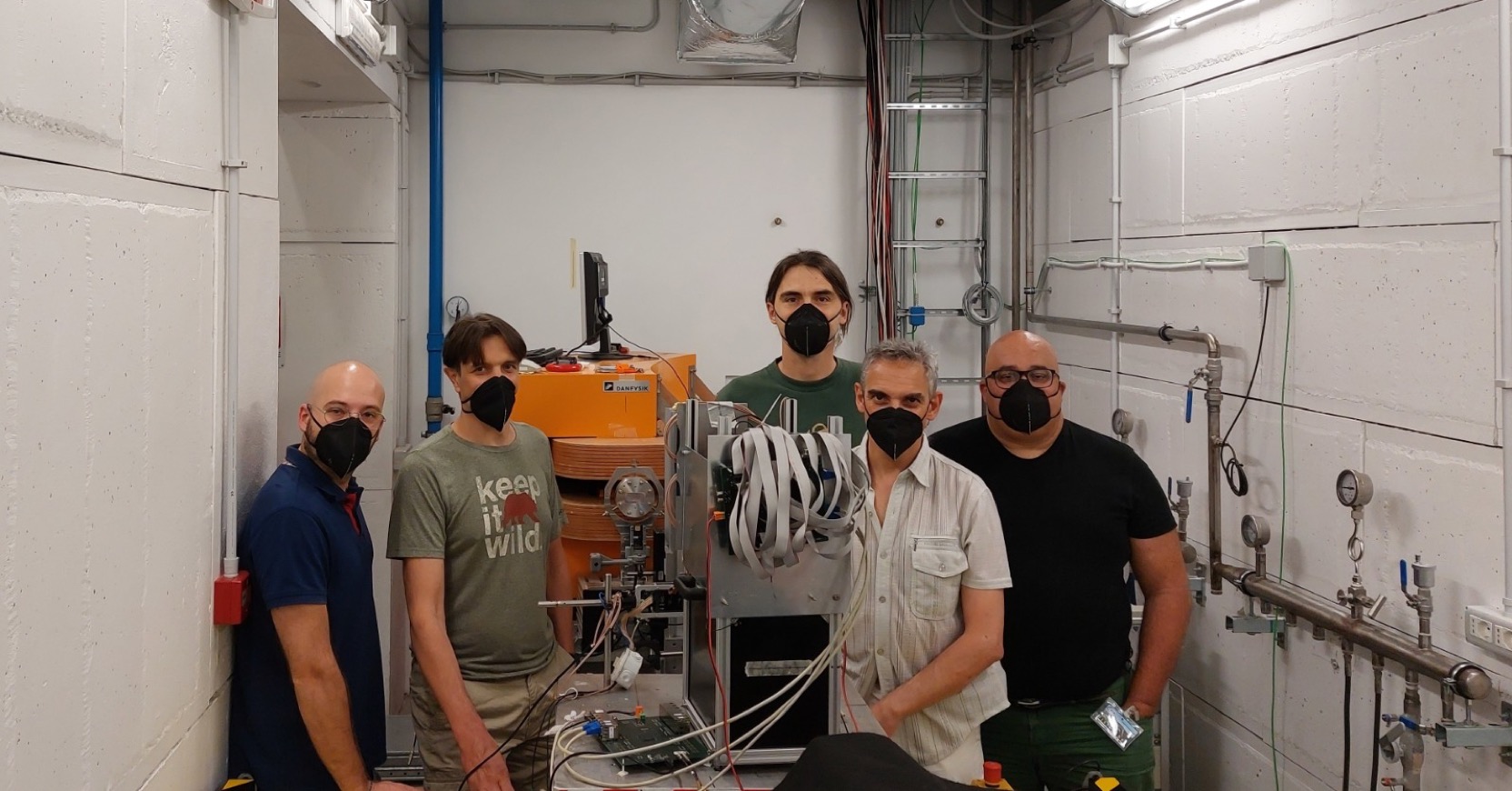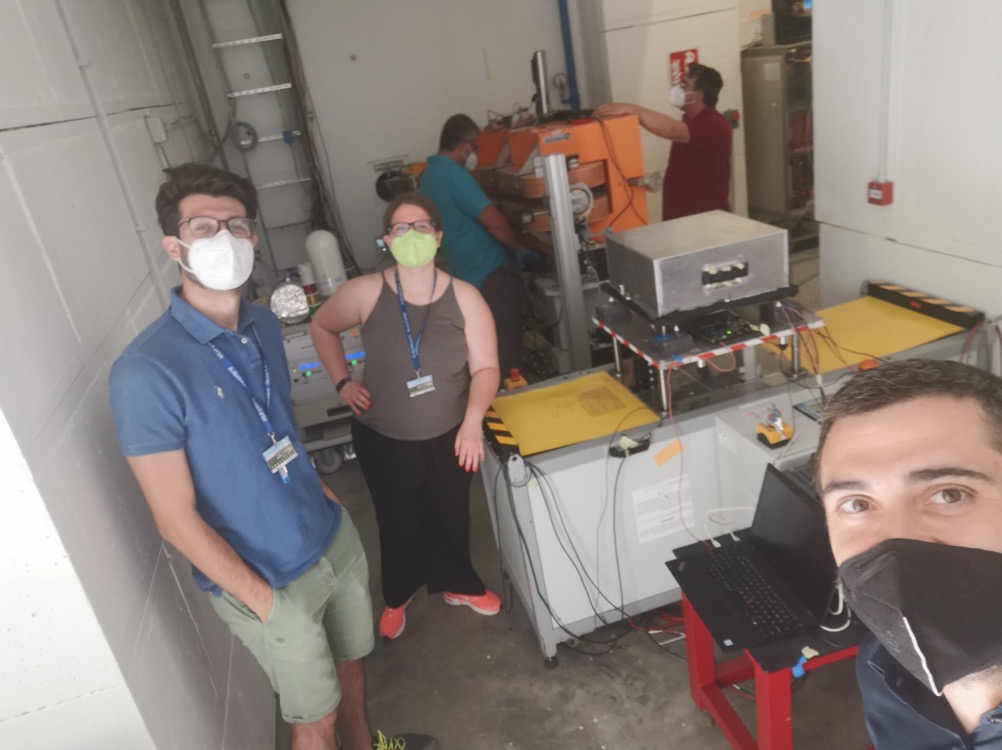
The activity of the Beam Test Facility (BTF) of the Frascati National Laboratory included two operating slots (test beams) to test, for the first time, as many experimental apparatuses born in two distinct INFN collaborations and Chinese scientific and government institutes.
Both dedicated to investigations in the orbital environment, the second satellite of CSES-LIMADOU and the calorimeter of HERD have been designed for totally different measurements tested in BTF, thanks to the great potential that the infrastructure offers.
LIMADOU is part of a scientific program that studies natural and anthropogenic electromagnetic fields, their emissions and possible correlations with seismic events. The first satellite of the collaboration (CSES-01) has already been tested in BTF in 2016: the second element of the constellation (CSES-02) will mount an innovative particle tracker, which has just concluded its tests with an electron beam in the new BTF experimental room, the BTFEH2.

So, the LIMADOU team, made up of INFN and the University of Trento, used the corresponding BTF2 line: single-particle electron beams at different energies (from 30 to 120MeV) were produced to characterize the response of the apparatus to natural events, similar events that will occur along the satellite’s orbit. A delegation from the Italian Space Agency was received in the same experimental room where the LNF director and the head of the Accelerator Division of the Frascati National Laboratory illustrated the potential of the line.
The HERD (High Energy Cosmic Radiation Detection) collaboration, on the other hand, aims to install its detector in the Chinese space station, to study the composition of cosmic rays, to monitor gamma emission and indirect search for dark matter.
The team of the INFN and the University of Florence performed a fixed energy with variable charge test beam with BTF2, from a single particle to about ten thousand per shot, to explore the extremely extended dynamic range of the electronics associated with the LYSO calorimeter, designed to detect the energy released by both penetrating particles and high energy showers up to (and beyond) the impressive PeV scale.
 INFN-LNF Laboratori Nazionali di Frascati
INFN-LNF Laboratori Nazionali di Frascati